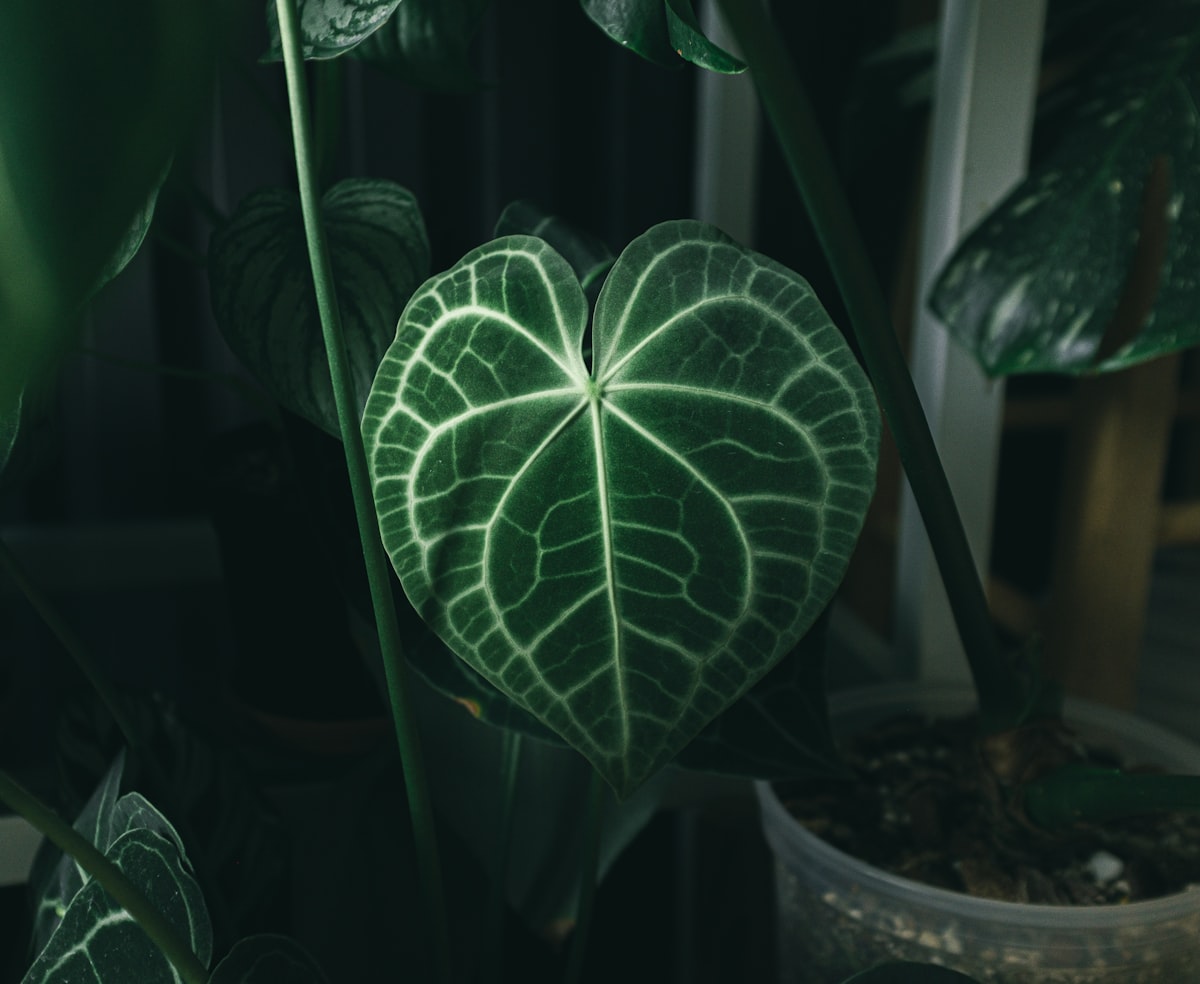How to Grow Anthurium Crystallinum
Anthurium Crystallinum is an increasingly popular indoor houseplant known for its striking aesthetic and beautiful, velvety leaves.

Table of Contents
As a tropical plant, it requires specific care to thrive, but with proper attention, anyone can learn to grow and maintain this rare and gorgeous species in their home.
This plant is not only for its unique appearance but also its ability to continue growing despite being indoors.
Although it can be a bit finicky, following the essential guidelines in planting, caring for, and troubleshooting issues will ensure your Anthurium Crystallinum remains a standout addition to your indoor garden.
Key Takeaways
- Anthurium Crystallinum is a beautiful and rare tropical houseplant with velvety leaves.
- Proper care, including planting, maintenance, and troubleshooting, is crucial for successful growth.
- While challenging, the striking aesthetic and ability to thrive indoors make it worthwhile.
About Anthurium Crystallinum
Anthurium Crystallinum is a stunning tropical beauty belonging to the Araceae family.
This epiphyte is native to the rainforests of Central and South America.
To grow Anthurium Crystallinum successfully, maintain high humidity levels between 70 and 80% and provide bright, indirect light.
Keep the plant warm and use a potting mix with sphagnum moss for better root development.
Growing Anthurium Crystallinum
To start planting your Anthurium Crystallinum, choose a healthy specimen from a reputable nursery that showcases the plant's distinct heart-shaped leaves.
Select a pot size appropriate for the root system, ideally a terracotta pot with proper drainage holes to prevent root rot.
For the potting mix, combine equal parts of well-draining compost, sand, perlite, peat moss, and coconut coir to provide optimal soil conditions.
This blend promotes both moisture retention and aeration, ensuring the growth of the plant and the continued development of its beautiful leaf shape.

Caring for Anthurium Crystallinum
Sun and Temperature
Anthurium Crystallinum thrives in temperatures between 65-75°F (18-24°C) with bright indirect light.
Protect your plant from direct sunlight, as it may cause scorching of the leaves.
Water and Humidity
Water your Anthurium Crystallinum when the top layer of soil feels dry to avoid overwatering or excessive watering.
Maintain at least 70-80% high humidity to mimic its tropical environment.
Soil
A well-draining soil mix containing orchid bark, perlite, and compost is ideal for Anthurium Crystallinum.
Ensure your potting soil promotes good aeration, retains some moisture, and has a slightly acidic pH.

Fertilizer
Fertilize your Anthurium Crystallinum with a balanced, slow-release fertilizer once a month during the growing season.
Avoid applying excessive chemical fertilizers, as it may harm your plant.
Repotting
Repot your Anthurium Crystallinum when its roots begin to outgrow the current pot.
Choose a pot slightly larger than the previous one and provide fresh, well-draining potting soil.
Pruning and Propagation
Regularly prune your Anthurium Crystallinum to remove dead or damaged leaves.
Propagate through stem cuttings or seeds, using a moss pole for support if desired. Maintain optimal conditions for successful propagation.

Troubleshooting Plant Problems
Growing Problems
If your Anthurium Crystallinum is experiencing common growing problems such as wilting or burn marks on its leaves, it's crucial to assess your plant's environment.
Factors like overwatering, extreme temperatures, or excessive sunlight might be the primary cause.
Monitor soil moisture closely and provide indirect sunlight to avoid these issues.
Pests and Diseases
Pests like aphids and mealybugs can attack Anthurium Crystallinum plants. To control these pests, use insecticidal soaps or other non-toxic treatments.
Fungal diseases can also afflict these plants — if you notice lesions on the leaves, apply a fungicide to prevent further damage.

Companion Planting
When you pair Anthurium Crystallinum with other plants, be aware of its toxicity.
The plant contains calcium oxalate crystals, which are poisonous for pets and humans if ingested.
Keep the plant away from curious pets and children, and always practice proper hygiene after handling the plant to avoid any potential issues.
Conclusion
Anthurium Crystallinum, a rare and expensive climbing plant, can thrive in your home with proper care.
To promote healthy growth, use a mix of potting soil, pine bark, and charcoal as a growing medium while maintaining a warm environment and high humidity.
The stunning silver-white, velvety leaves will flourish with evenly moistened soil and provide bright indirect light.
By adhering closely to this care guide, you'll enjoy the striking appearance of this plant's large, glossy leaves and the unique orange, violet, and white berries it produces.
Don't forget to regularly check for aerial roots and maintain optimal growing conditions to ensure the long-lasting beauty of your Anthurium Crystallinum.
Frequently Asked Questions
What is the best soil mix for promoting growth?
An appropriate soil mix for Anthurium Crystallinum includes orchid bark, perlite, and compost. This creates an airy yet moisture-retaining substrate for your plant.
How often should I water my Anthurium Crystallinum?
Water your Anthurium Crystallinum when the top inch of soil begins to dry, maintaining evenly moist but not wet soil.
What are the preferred lighting conditions?
Provide your Anthurium Crystallinum with bright, indirect light. Direct sunlight should be avoided, as it can damage the plant's foliage.
Can Anthurium Crystallinum be propagated easily?
Yes, Anthurium Crystallinum can be propagated using stem cuttings or by division. Make sure to transplant the new growth into a suitable potting mix carefully.
How much time does it take for the plant to grow?
Anthurium Crystallinum's growth rate varies depending on light, temperature, and care factors. However, the plant should grow steadily throughout the year with proper conditions.
What is the common name for this plant?
Anthurium Crystallinum is called "Crystal Anthurium" due to its distinctively patterned, velvety leaves.



